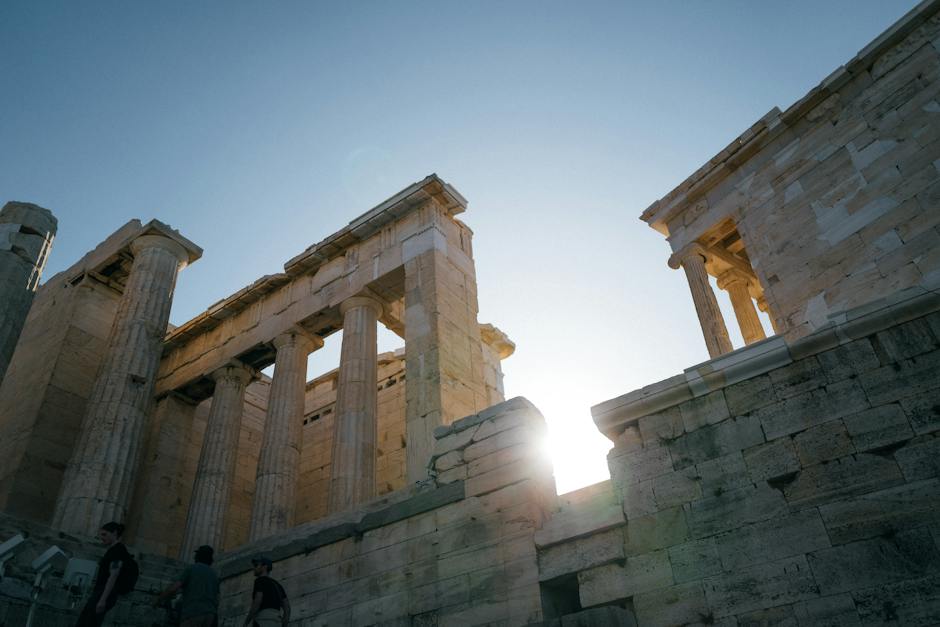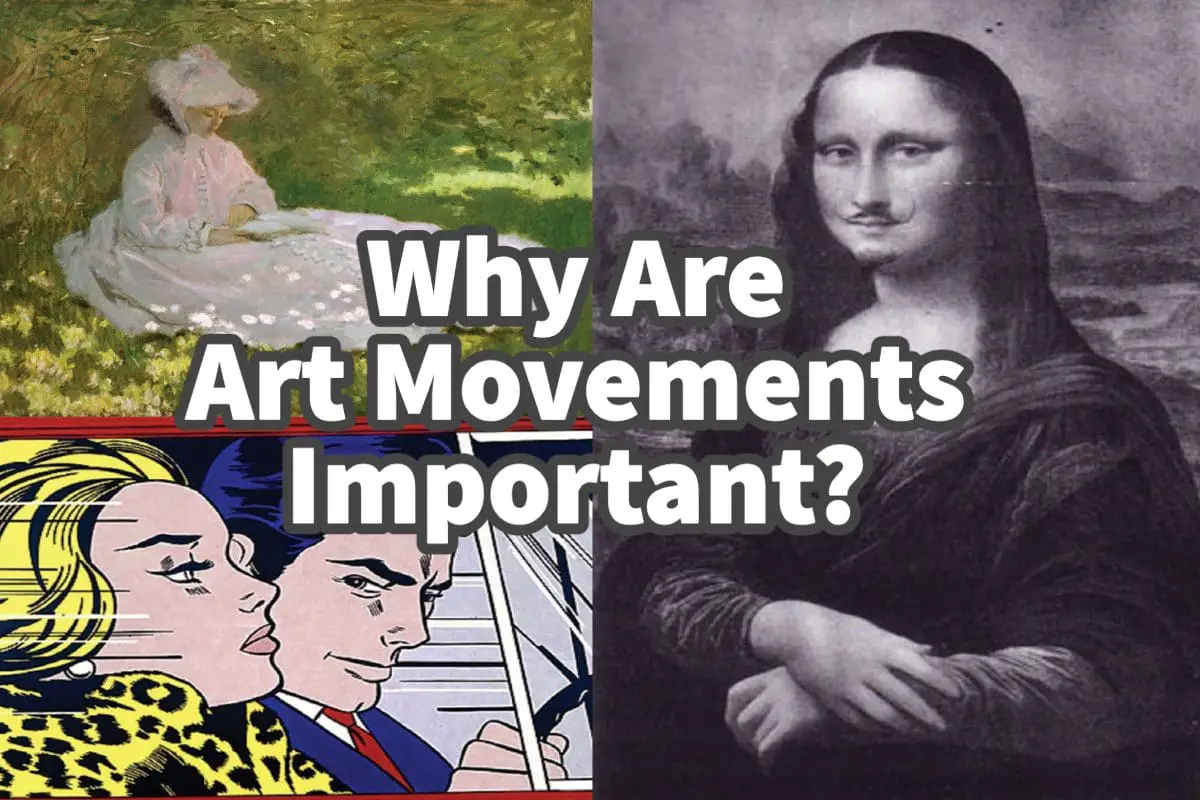If you are interested in studying art, you must understand why art movements continue to be essential to us. Understanding and knowing about art movements helps us learn more about the artists and their paintings.
Understanding art movements is crucial not just for the artist but also for anyone interested in art. We can learn many things from the art movements that will help us understand history, art techniques, themes, and how art is created. To truly understand art, we need to understand art movements.
Table of Contents
- The Significance of Art Movements in Artistic Exploration and Understanding
- 10 Lessons I’ve Learned from Different Art Movements
- Frequently Asked Questions
- Related Questions
The Significance of Art Movements in Artistic Exploration and Understanding
For anyone delving into the study of art, comprehending the significance of art movements is fundamental. These movements are not just a collection of styles or techniques; they offer deep insights into the minds of artists and the contexts of their creations.
By exploring various art movements, we uncover a wealth of knowledge encompassing historical contexts, artistic methodologies, thematic explorations, and the very evolution of art creation.
Understanding these movements is essential for artists and art enthusiasts alike, as it opens a window to fully grasping the depth and breadth of artistic expression across different eras.”
Art Movements Help Us Understand History
Art movements help us understand history and life when the artist lived. The art movement gives us a view of what the artist was experiencing each day.
Art is rich with history. Everything from the colors used the names of the paint, to the subject painted or how the painting is produced. Art movements and history go hand-in-hand.
We cannot separate an art movement from the history of when the art movement was active. That is why to understand the art movement, you must understand history. Understanding history makes art movements essential to our lives, where we came from, and who we are.

Art movements and history help tell us about the sentiment and the people who lived during a specific time. But more than that, we see what the artists saw as they created the artwork more accurately than any history book. We see the art through the artist’s eye.
The American Poet Amy Lowell said it best when she said:
“Art is the desire of a man to express himself, to record the reactions of his personality to the world he lives in.”
Amy Lowell
Art Movements Introduce New Art Techniques
Art movements show us new art techniques. The artists show us and teach us a new technique that artists use to create their art.
A great example is the Impressionists and how they changed how brushstrokes were being done at the time. Since the time of the Impressionists, many artists have built upon using the same type of brushstrokes for their artwork.
The Impressionists also believed in using light and how light affected the painting. Today, many artists also look at the light in their paintings and how the effects of light influence their artwork.
This shows that these art movements are still essential for us today. If you are an artist, it helps you to view art with new eyes as you understand the different art movements and the period in which the artist created the artwork. It helps us to understand what made that particular artist unique or essential.
The American artist Georgia O’Keeffe spoke of how her art creation gave her a voice to communicate with the world. Her art gives us a permanent glimpse into her world. O’Keeffe said this about her art:
“I found I could say things with color and shapes that I couldn’t say any other way – things I had no words for.”
Georgia O’Keeffe
Art Movements Give New Artistic Themes
Pop artists in the 1950s and 1960s used new themes and materials to produce their art. Themes such as cans of soup, cartoons, Hollywood, and other themes influenced their art and the subject matter for art.

In speaking of the Pop Art movement, Roy Lichenstein spoke about what Pop Art meant to him; he said:
“Pop Art looks out into the world. It doesn’t look like a painting of something, it looks like the thing itself.”
Roy Lichtenstein
Art movements are important because they allowed us to view the lives of the artists during their time and see what influenced them. It helps us to understand and know what motivated them to paint and why.
Art Movements Shows Us Great Art Requires Collaboration
The art movement came about because a group of like-minded artists believed in the art direction, so they produced the art and formed a movement. Great art is usually a collaboration of artists working together.
I do not know of any other profession where you individuals who are all in a sense competitors or competing to be able to sell their artwork yet at the same time are happy to do it together in a group and support each other.
When we look at our history throughout the ages, art movements are usually always collaborative. Artists worked together and supported one another as a common artistic expression and belief system tied them together.
The New York Agora Gallery said it best about art and collaboration when they said:
“Art collaborations, when done right, can be a beautiful thing. History has proved time and again that two creative minds can sometimes be better than one. Even today, artists are increasingly collaborating with each other and with creative professionals from other field.”
AGora Gallery
Art Movements And Art Is Constantly Moving
The art movement shows us that all art forms are constantly moving and not standing still. Art is always evolving and developing. New techniques, materials, and thinking about things continually change with the skill and artist.
Norman McLaren, a Scottish-Canadian animator, director, and film producer, said:
“In any art movement, the art has to move into a new phase – a filmmaker has a desire to make a film that is not like a previous film.”
Norman Mclaren
As McLaren pointed out, each artist wants to create something different, looking at the previous art movement and building upon it.
Knowing and understanding art movements are essential for artists and non-artists alike. All of us can learn from the different art movements; these art movements help us understand our lives in the past and today.
10 Lessons I’ve Learned from Different Art Movements
Art, in its myriad forms, has been my guide through time, culture, and emotions. Over the years, as I’ve immersed myself in various art movements.

I’ve gleaned insights that have shaped my understanding of the world and myself. Here are ten personal revelations that different art movements have granted me:
- How Society Influences Art Over Time: The Renaissance, with its humanistic fervor, and Dadaism, with its post-war disillusionment, taught me how art is often a mirror, reflecting societal shifts, hopes, and traumas. Through these movements, I realized that art doesn’t exist in a vacuum; it’s intrinsically tied to the societal currents of its time.
- The Cultural Chronicles of Art: From the tribal motifs of African art to the intricate patterns of Islamic art, each movement has been a window into different cultures. They’ve shown me values, beliefs, and the very ethos of societies, reinforcing the idea that art is a cultural chronicle.
- Art as a Time Capsule: Movements like the Romanticism of the 18th century or the Post-Impressionism of the late 19th century have taught me how art captures epochs. Every brushstroke and every chiseled figure encapsulates historical moments, allowing me to time travel and walk in bygone eras.
- The Courage to Innovate: The Cubists, breaking away from traditional perspectives, and the Abstract Expressionists, defying concrete representations, have shown me that great artists are pioneers. They dare to innovate, challenge norms, and redefine expression boundaries.
- Emotion in Every Era: Whether it’s the raw passion in Baroque art or the serene minimalism in Zen-inspired art, I’ve learned that every movement, no matter its era or style, captures a spectrum of human emotions.
- Art as Social Commentary: The biting critiques in Pop Art or the stark realism in Social Realism have shown me that art isn’t just for art’s sake. It can be a powerful tool for social commentary, advocating change, and highlighting issues.
- Nature Through New Lenses: From the meticulous botanical illustrations of the Enlightenment era to the swirling skies of Van Gogh, art movements have shown me diverse interpretations of nature, making me appreciate its beauty anew.
- The Universal in the Personal: Autobiographical elements in Frida Kahlo’s works or the introspections in Surrealism have taught me that personal narratives in art often resonate universally, bridging divides of time and geography.
- The Dance of Light and Shadow: Studying movements like the Chiaroscuro of the Renaissance period, I’ve learned the intricate play of light and shadow in art, adding depth and drama to compositions.
- Art’s Enduring Legacy: Be it the ancient frescoes of the Greco-Roman era or the digital art of the 21st century, the lasting impact of each movement reinforces my belief in art’s enduring legacy. It’s not just about the present moment but echoes in eternity.
Art movements have been my teachers, philosophers, and guides. They’ve unraveled layers of society, history, and the human psyche, enriching my perspective and deepening my understanding of the intricate tapestry of life and creativity.
Anita Louise Art is dedicated to art education, great artists, and inspiring others to find and create their art. We love art that uplifts and inspires. #ArtToMakeYouSmile! #ArtToMakeYouHappy!
If you are interested in seeing any of my art, you can find out more by clicking here. If you are interested in what inspires me and my paintings, you can discover more by clicking here.
We have a free newsletter and would love you to be part of our community; you can subscribe to the newsletter by clicking here. If you have any questions, I would be happy to talk to you. You can reach me, Anita, by clicking here.
Subscribe to our Anita Louise Art YouTube Channel with great videos and information by clicking here.
Join us for our podcast “5 Minutes With Art.” Spend just 5 minutes a week with us to discover and learn about great art and artists. You can find out more about our podcast by clicking here.
Frequently Asked Questions
Why are art movements important in the study of art?
Understanding art movements is essential for art students as it provides a chronological framework for the evolution of artistic styles, techniques, and concepts. It helps to grasp the historical context in which artworks were created and appreciate the progression of artistic expression.
How do art movements contribute to our understanding of history?
Art movements often reflect and respond to the socio-political, cultural, and technological changes of their time. Studying art movements enables us to explore historical narratives, ideologies, and societal shifts, providing a unique visual perspective on different periods.
What role do art movements play in shaping artistic identities?
Art movements serve as platforms for artists to share common ideas, goals, and principles. By aligning with a particular movement, artists define their artistic identity and contribute to a collective dialogue, fostering a sense of community among creators who share similar visions.
How do art movements impact artistic techniques and innovation?
Art movements frequently introduce new techniques, materials, and approaches to artistic creation. Studying these movements allows artists to draw inspiration from the innovations of their predecessors, fostering a dynamic environment of continuous experimentation and evolution within the art world.
Can the study of art movements enhance one’s appreciation of individual artworks?
Understanding the context of an artwork within a specific art movement provides deeper insights into the artist’s intentions, influences, and the prevailing artistic trends of the time. This knowledge enhances the viewer’s appreciation by connecting the artwork to a broader cultural and historical framework.
Why are art movements relevant for art historians and curators?
Art historians use art movements as organizing principles to analyze and categorize artistic developments throughout history. Curators rely on this knowledge to curate exhibitions that showcase the evolution of art, offering viewers a comprehensive experience of various periods and styles.
How do art movements influence the thematic content of artworks?
Art movements often center around specific themes, ideas, or philosophies. Studying these movements allows art enthusiasts to recognize recurring themes and motifs, gaining a deeper understanding of the symbolic language artists use to convey messages and explore cultural, psychological, or philosophical concepts.
In what ways do art movements contribute to cultural diversity and global perspectives?
Art movements are not confined to specific regions; they often transcend borders, influencing artists globally. By studying art movements, individuals gain exposure to diverse cultural perspectives and contribute to fostering a global appreciation for the richness and variety of artistic expression.
How can knowledge of art movements inspire contemporary artists?
Contemporary artists often draw inspiration from historical art movements, adapting and reinterpreting their principles in modern contexts. Understanding these movements provides a foundation for artists to engage with tradition while pushing the boundaries of innovation in their own work.
Is the study of art movements limited to visual arts, or does it extend to other forms of artistic expression?
While traditionally associated with visual arts, the concept of art movements can be applied to various forms of artistic expression, including literature, music, dance, and film. Studying cross-disciplinary movements helps individuals appreciate the interconnectedness of different art forms throughout history.
Related Questions
How Do Art Movements Begin?
Understanding art movements are not just important for the artist but also for anyone interested in art. We can learn many things from the art movements that will help us understand history, art techniques, art themes, and how art is created. To truly understand art, we need to understand art movements.
By clicking here, you can learn more by reading How Do Art Movements Begin?.
Why Did New Art Movements Develop In The Years Following World War 1?
Many of the art movements after World War 1 came about as a direct protest about the devastation and loss of human life in the First World War. Many of these art movements also included cultural and political movements where like-minded artists band together to produce satirical and other art.
You can discover more by reading Why Did New Art Movements Develop In The Years Following World War 1? by clicking here.

